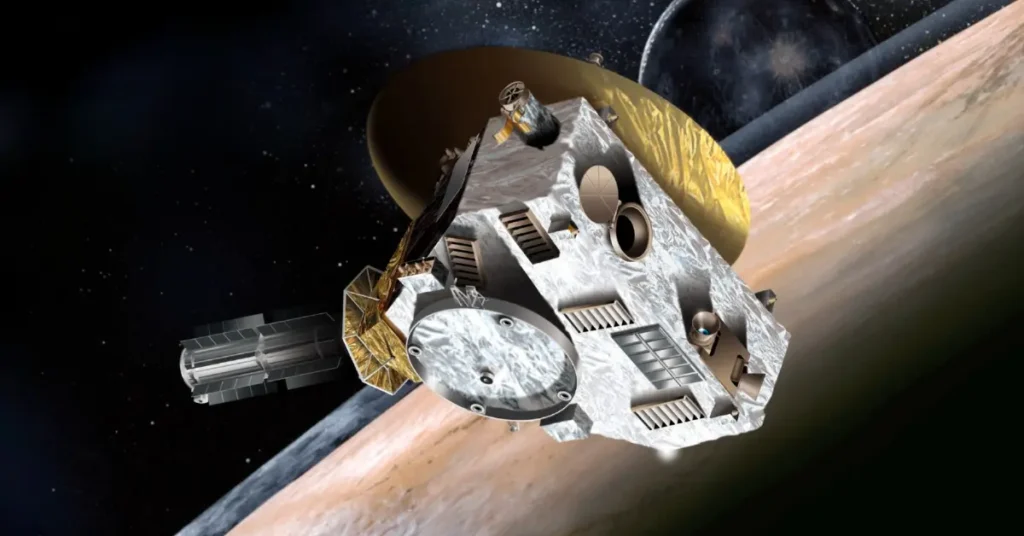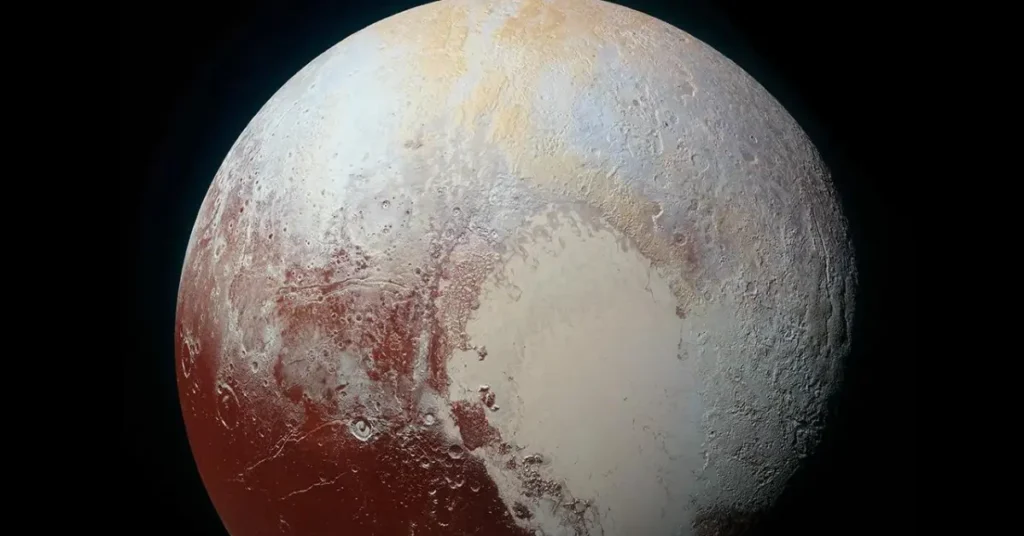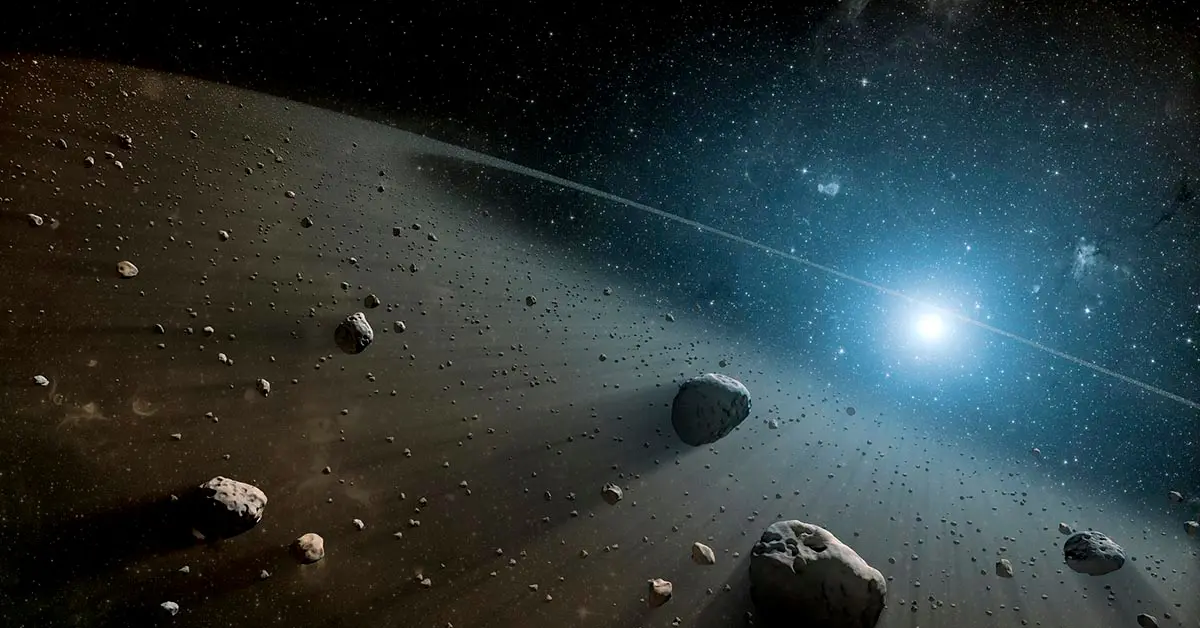In the distant reaches of space lies the enigmatic Kuiper Belt, a peculiar donut-shaped region harboring hundreds of thousands of icy rocks. Discovered only recently, this cosmic hinterland extends far beyond the orbit of Neptune.
Amidst the quiet expanse, NASA’s spacecraft ventures forth, probing deeper into the cosmos, and stumbles upon a perplexing discovery: the Kuiper Belt may possess dimensions far grander than previously imagined.
Venturing into the outer realms of our Solar System, NASA’s New Horizons spacecraft, stationed more than 8.8 billion km away, is delving into the mysteries of the Kuiper Belt. This frigid zone encircles the Sun, and intriguingly, recent observations suggest an unexpected revelation.

Initially anticipated to depart this region, New Horizons has detected heightened dust levels, likely stemming from micrometeorite impacts within the belt. Could this indicate an even more expansive extent of the Kuiper Belt, challenging our previous understanding?
Situated beyond Neptune’s orbit, the Kuiper Belt, spanning approximately 8 billion km, was conceptualized by Gerard Kuiper in the mid-20th century, lending its name to this celestial phenomenon. Hosting a multitude of icy bodies and dwarf planets, it serves as a valuable window into the Solar System’s formation and evolution.
Also read: How is the Sports Landscape Evolving With the Advent of Blockchain Technology in 2024?
Billions of years ago, the gravitational influence of Neptune, Uranus, Saturn, and Jupiter sculpted the primordial Solar System, possibly sweeping aside celestial debris that now populates the Kuiper Belt. These remnants of planetary formation, cast into the distant fringes, now emerge into prominence, thanks to missions like NASA’s New Horizons spacecraft.

Embarking on its mission in January 2006 atop an Atlas V rocket, New Horizons aimed to explore the outer reaches of the Solar System. Initially set to conduct a close flyby of Pluto, achieved after 9.5 years, it continued its journey to investigate the Kuiper Belt.
To grasp the staggering distance traversed by New Horizons, consider that nearly nine years have elapsed since its rendezvous with Pluto. Currently, it lies approximately 60 times farther from the Sun than Earth, equivalent to 60 astronomical units (AU).
Having completed its Pluto flyby in 2015, New Horizons navigates the Kuiper Belt, nearly 60 times the Earth-Sun distance. The Venetia Burney Student Dust Counter (SDC), a creation of students at the University of Colorado Boulder, diligently records dust levels throughout the spacecraft’s odyssey, offering valuable insights into outer Solar System collisions.

“NASA's New Horizons Discovered a Large Surprise in The Kuiper Belt”
— Brian Roemmele (@BrianRoemmele) February 21, 2024
Article:https://t.co/TOP5KVfTHO
Recent revelations, disclosed in a paper by lead author Alex Doner in the Astrophysical Journal Letters, propose that the detected dust particles may originate from frozen remnants of collisions between larger Kuiper Belt Objects (KBOs).
This unexpected data challenges prevailing models predicting a decline in dust density and KBO population, hinting at a Kuiper Belt extension beyond previous estimates, or perhaps the existence of a second belt.
Accumulating data over three years, spanning New Horizons’ journey from 45 to 55 astronomical units, disclosed unforeseen possibilities. Simultaneously, observatories like the 8.2-meter optical-infrared Subaru Telescope in Hawaii unveil new KBOs. Collectively, these discoveries hint at the likelihood that Kuiper Belt objects and dust may extend up to 80 astronomical units from the Sun.
Entering its extended mission, New Horizons, armed with adequate power and propellant, endeavors to persist well into the 2040s. At its current trajectory, reaching approximately 100 astronomical units from the Sun, there’s speculation among the research team that the SDC could pinpoint the transition into interstellar space. This prospect adds an exciting dimension to the spacecraft’s future explorations.
FAQs
1. What is the Kuiper Belt, and why is it significant?
The Kuiper Belt is a vast region beyond Neptune containing numerous icy bodies and dwarf planets. It offers insights into the Solar System’s formation and evolution.
2. How did NASA’s New Horizons contribute to our understanding of the Kuiper Belt’s size?
New Horizons detected elevated dust levels during its journey through the Kuiper Belt, challenging previous estimates and suggesting a larger expanse than anticipated.
3. What could the increased dust levels in the Kuiper Belt indicate?
The dust levels may result from collisions between larger Kuiper Belt Objects (KBOs), challenging existing models and prompting further exploration.
4. How far has New Horizons traveled, and what does its continued mission entail?
New Horizons has covered 5 billion miles over 18 years. With enough propellant, it is expected to operate beyond 100 astronomical units from the Sun, providing valuable data through the 2040s.
5. What implications does the potential extension of the Kuiper Belt hold for astronomy?
The discovery suggests the outer edge of the Kuiper Belt could extend much farther than previously estimated or possibly include a second belt. This challenges existing paradigms and enriches our understanding of the Solar System’s outer reaches.
Content Contributor: Sridhar Naresh
**Featured image courtesy Cosmos Magazine
***With inputs from NASA









